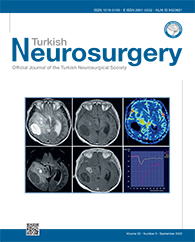MATERIAL and METHODS: A total of 35 infants with simple premature closure of frontal suture were divided into the experimental group (n=18) and the control group (n=17). In the experimental group, the skull model was reconstructed by imaging examination and three-dimensional (3D) printing technique before operation, and the frontal bone reconstruction was used to guide the surgical treatment of cranial stenosis. In the control group, the skull model was reconstructed by imaging examination and 3D printing technique before operation, and the cranial suture reconstruction was performed by the same operator. The surgical effects of the two groups were compared.
RESULTS: During the 12-month follow-up after operation, the interfrontal angles of scaphoid malformation were 153.67 ± 12.77 and 128.67 ± 7.90 in the experimental and control groups, respectively. The difference between the two groups was statistically significant.
CONCLUSION: Frontal bone reconstruction surgery can guide the operation of cranial stenosis, significantly improve the surgical treatment effect of infants with frontal suture, and esthetically enhance the head type of infants. Moreover, its effect is better than that of traditional operation, which is worth given significant attention in clinical settings.
Keywords : Infant, Cranial stenosis, Surgery, Premature closure of cranial suture, 3D printing technique




